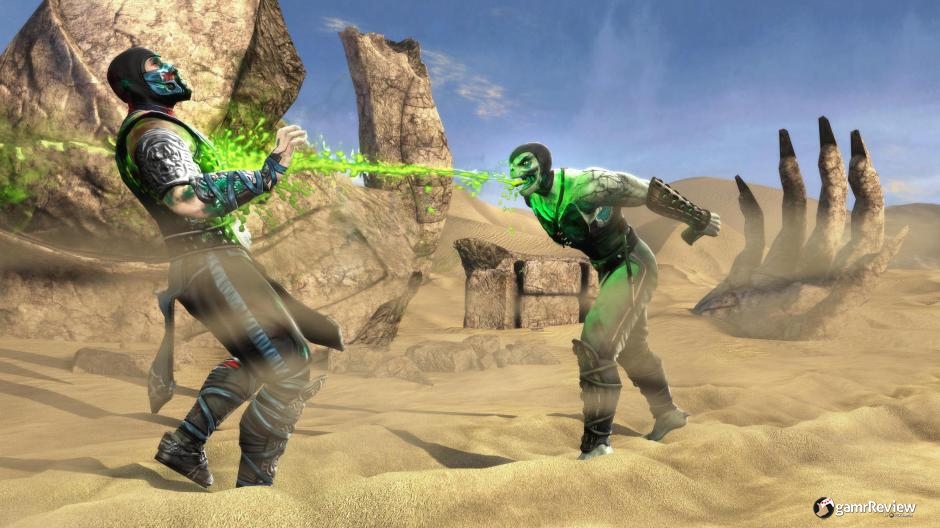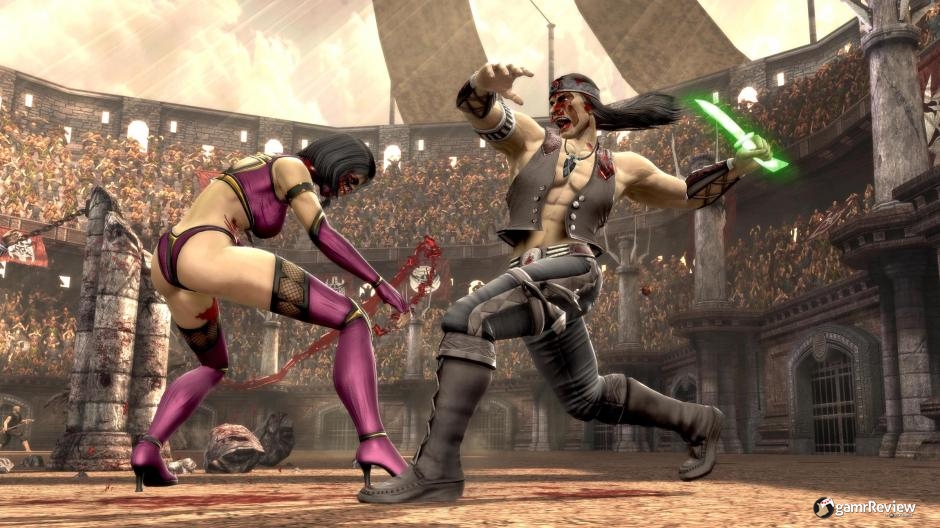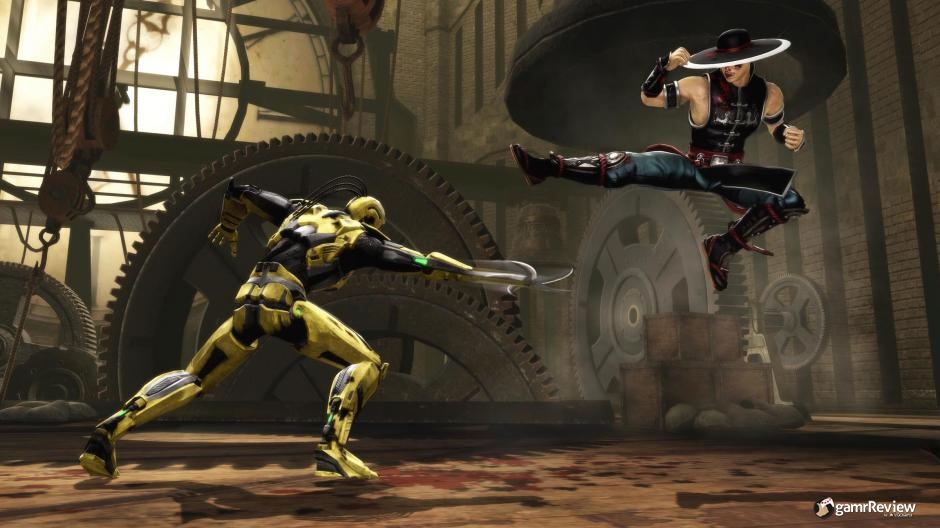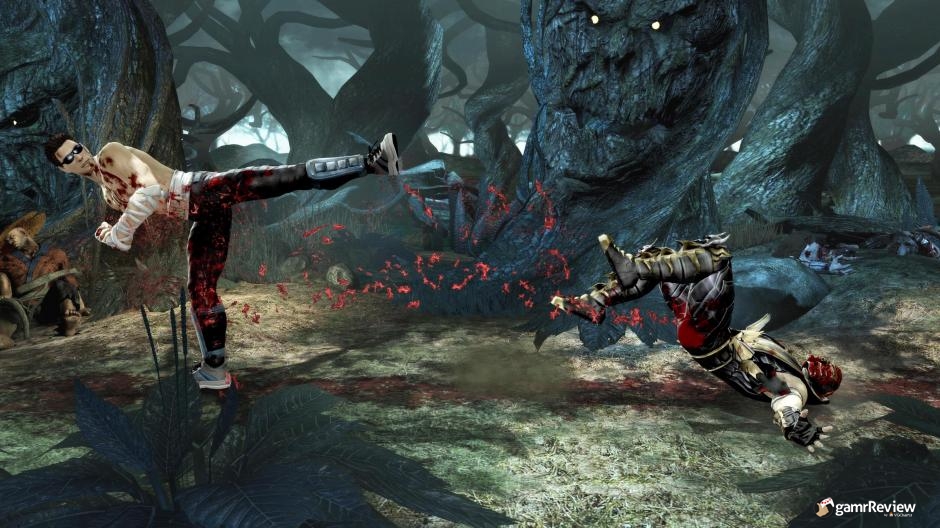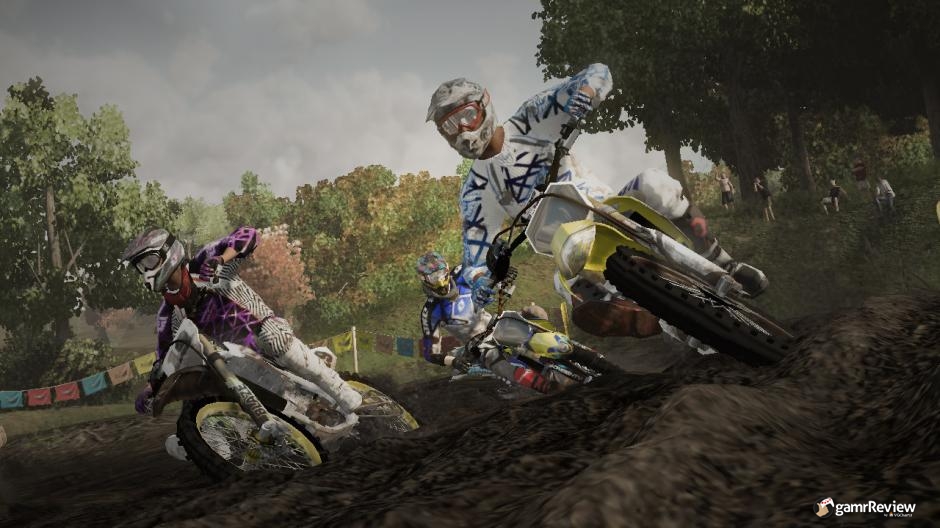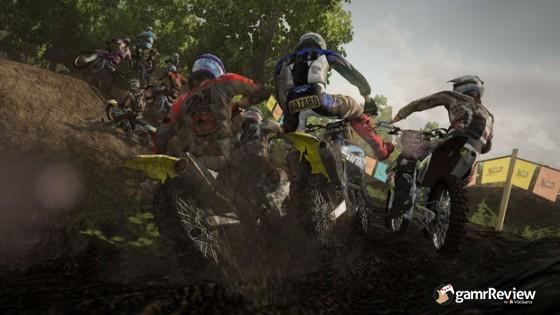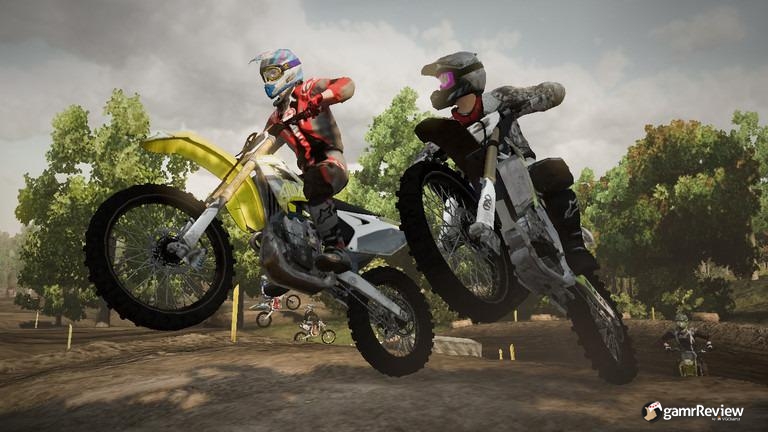Red Faction: Armageddon review

The very first objective you get in Red Faction: Armageddon captures what it’s all about: “Destroy the wall.”
Gripping the shaft of my mighty, gyroscopically enhanced hammer, I swing at the barrier. CRACK! The force of impact with steel-reinforced concrete reverberates through my character’s body. THUD! Chunks of rebar-entangled concrete fill the air as a 50-foot-long, three-foot-thick barrier dynamically collapses, with chunks sailing into the rear supports of a guard tower behind it. The dust settles to the dull moan of stressed metal as I approach the tower, knowing what’s about to happen. A sound like rolling boulders fills the air, and 10 tons of concrete and twisted metal lands at my feet. Total destruction. Absolute power.
RFA has a destruction engine like you wouldn’t believe (unless you’ve played Red Faction: Guerilla). Anything that’s not terrain—barracks, bridges, people—is all fair game to be bludgeoned, blasted, or concussed into rubble. In an engagement with a band of crazed cultists in the opening battle, a rocket trail reveals two hostiles firing from cover. I’ve got several options available: open fire directly with my assault rifle, collapse a tower on their heads, or flank them by bashing in the side wall of their firing position with my hammer. I’m a sucker for that hammer, and in seconds tenderized cultist meat spatters the remaining walls and ceiling. The open environment provides innumerable creative combat opportunities—it’s an empowering sensation that too few games offer.

The punishment for your halitosis is death.
RFA’s biggest limitation is that, 30 minutes in, its forgettable sci-fi story moves most of the action into a network of tunnels. The machine that terraformed Mars’ atmosphere has been destroyed by a cult leader, driving the populous underground—where they’re attacked by a swarm of Martian bugs. At least it’s reasonably well voice-acted and never really descends into schlock in its search for reasons for the bald hero, Darius Mason, to break many, many things.
Except for a few instances (such as a firefight with aliens on a three-story underground scaffold), that creative combat of the opening level is lost, and gives way to a feeling of playing as the unstoppable boulder chasing Indiana Jones down the tunnel in Raiders of the Lost Ark. For the rest of the game, you’re moving forward from chamber to chamber, connected by dark, narrow tunnels, and fighting aliens that jump from ceiling to floor to wall faster than a pack of third graders on Pixy Stix. The change of venue isn’t necessarily less fun, but the combat becomes something less thoughtful.
There’s simply less to destroy in these tunnels than there is on the surface. The awesome explosive weapons I pick up on my journey, such as the Singularity Gun and Plasma Cannon, just aren’t very effective against enemies that don’t stand still. Don’t get me wrong—disintegrating aliens with a Nano Rifle is always a good time, but the particular combat situations that RFA’s tunnels and bugs create are so perfectly tuned for one particular weapon that it rarely makes sense to use anything else.
The real star of RFA is the Magnet Gun. Much like Half-Life 2’s Gravity Gun, the Mag Gun is inventive and kinetic in a way that you won’t want to use any other weapon. Its first shot fires an orange magnet tag on any destructible surface (or enemy), and the second affixes a blue magnet tag on any other. Once both are placed, the blue tag rips whatever it’s attached to (say, a 20-foot-tall explosive canister) off of its moorings and tries to unite it with whatever the orange tag is on, such as the alien across the room. Because you’re often in a corridor, enemies can only come from so many directions, making it easy to nab baddies one by one and splat them into stalactites at the other end of the corridor. It has unlimited ammo, and it’s so powerful that I found myself going entire levels, sometimes more than an hour, without equipping another weapon.

The Mag Gun is basically a futuristic flyswatter.
Unlike the Gravity Gun, though, this weapon isn’t presented with a lot of interesting challenges. You never have to think differently about how it works—it’s always either launch the enemy into something or smack things into the enemy. RFA’s physics and destruction are by far its strongest features, but its potential feels wasted on the simple level design.
With all the destruction, inevitably a staircase or catwalk that you didn’t mean to destroy will explode. That’s where the Nano Forge kicks in—it can instantly repair virtually anything man-made with the push of a button. It’s a magic undo button that makes no sense, but it’s a clever way of preventing players from breaking the levels permanently, and handy for reconstructing cover in battle. Collecting salvage from broken objects allows you to upgrade the Forge, buffing your health or weapons, as well as unlocking new abilities.
There’re also vehicle sections to vary the pace. The four mechs Mason can pilot come in varying degrees of fantastic, but my favorite has got to be the Mantis—it’s a spider-legged robot that spits plasma rockets and a great super-heating laser that burns its targets as you sweep it over the battlefield, followed by a spectacular linear explosion of everything the laser touched. The delay between pulling the trigger and watching your target explode is just long enough to make you feel like a sun god, so large and far away that it takes a few seconds for the ants beneath you to suffer your wrath.

What could be better than a pink explosion?
Just like the on-foot sections, however, vehicle sections funnel you through tight corridors. At one point I tromped through a subterranean studio apartment complex in a one-ton exoskeleton, and the only means of maneuverability was smashing through walls and ceilings. Yeah, that’s fun, but in a simple sort of way. I’m not playing cat-and-mouse with another mech, or even trying too hard to avoid damage.
If the campaign is an over-seasoned meat sauce, then the co-op multiplayer is a deep-fried buffalo—and man, it’s one tasty buffalo. The survival-style multiplayer has you and up to three friends battling waves of aliens and/or defending an objective. You’re still mostly fighting in confined spaces, often with the magnet gun, but now there are four of you. Boulders, columns, and baddies are flying all over the place, and your Nano Forge’s long-distance repair ability makes it easy to protect your objective as long as you’re still standing. It’s social mayhem that feels great, and it leads to all kinds of experimentation like Mag-Gunning one object in multiple directions.
There’s also the single-player Ruin Mode, a highly satisfying free-form destruction playground time trial that pits your arsenal against a ton of buildings. A leaderboard keeps you from feeling lonesome, and the grandeur of taking down sky-scraping structures in some of the outdoor maps is something sorely missed in the subterranean campaign.
It’s not really the lack of open spaces that holds Red Faction: Armageddon back, though. It’s a lack of player engagement. Eventually, even with a godlike weapon, combat feels empty—a bag of pyrotechnic fun without much creative spark. Still, demolishing Mars leaves me filled with an incredible sense of dominion over my environment, and I can’t help but wonder: why doesn’t every game use this technology?


